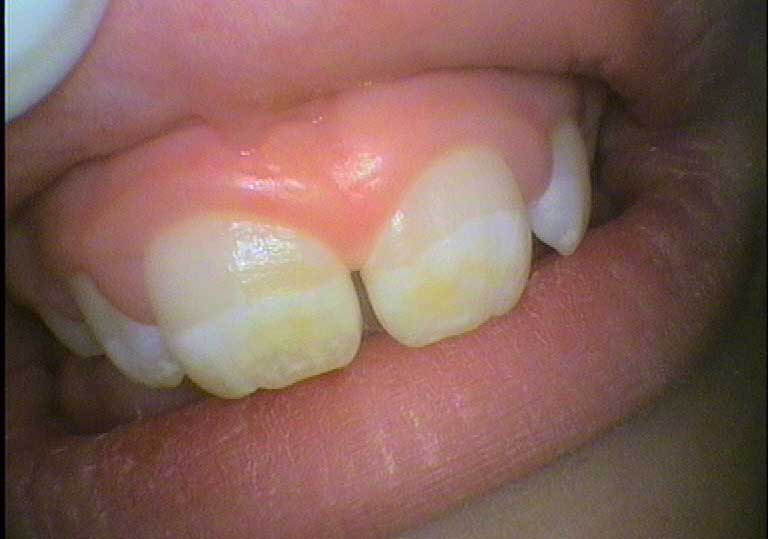Enamel defects (Hypoplasia and Hypo-calcification)
Enamel deposits as crystals the forming tooth from and sac around the top of the tooth above the root. The process involves a calcified layer, which is a white chalky appearance, being formed. This is called calcification. The next step is crystallisation of the enamel which enhances the calcified material. This gives the tooth surface a glass like appearance. The colour of the enamel is really a translucent glass that softens the colour of the next layer of the tooth, the dentine.

If the crystallisation process is interrupted hypo-calcification occurs. This leads to porous enamel that has a matt white appearance and no crystal like appearance. The non-crystallised enamel is easily worn and more prone to decay and can be sensitive. Also this porosity can lead to staining and often looks yellow.

The calcification layer actual is a framework for the shape of the tooth. Sometimes the parts or the entire calcification layer does not form at all. That means the dentine is exposed and the tooth shape is not completely formed. This is called hypoplasia.

The size of the enamel defects depends on what stage of the tooth development was the tooth affected and how long the affect lasted. Remember the teeth take time to form. For example the first molars which erupt at six years old start forming at birth. Sometimes the birth process can affect the forming of the surface of the enamel causing hypo-calcification and even hypoplasia if it’s severe enough trauma.

Next in series: Treatment of Enamel defects (Hypoplasia and Hypo-calcification)
Need an Appointment?
If you’d like to book an appointment with the dentist at Seymour Dental then call us in Dulwich Hill, Sydney on (02) 9564 2397 or
contact us
Next week
Merry Christmas for 2019